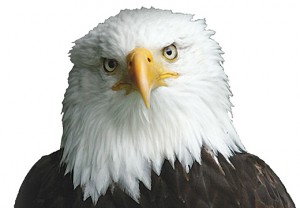Area Wildlife
BALD EAGLES ON THE SKAGIT RIVER
The majority of the Upper Skagit watershed bald eagle population is seasonal. In the winter, large numbers migrate from as far away as Alaska to eat the dead salmon carcasses that abound in the Skagit River and its tributaries. The best eagle watching season is from late November to late-January with eagle numbers peaking from Christmas through the second week of January – about two weeks after the peak of salmon spawning (and dying).
There are many opportunities to observe and photograph bald eagles perching in the bare limbs of cottonwood trees or feeding on spawned-out chum salmon on gravel bars. The place to start your visit is the Skagit River Bald Eagle Interpretive Center in Rockport. The staff and volunteers provide directions to Eagle Watcher sites, information handouts, souvenirs, guided interpretive walks, speaker presentations, and special tours. See Viewing Sites for a map and information about the places recommended.

Bald eagles are easily frightened away by people on foot approaching gravel bars or roosting trees and also by boats. If you approach too closely, the eagles will fly away, and not only will the viewing opportunity be lost, the eagles will lose an important opportunity to feed or conserve energy. For your safety, use pullouts and parking areas which are completely off the pavement. There are Guided Viewpoints and parking lots at Mile Post 100, Howard Miller Park, and the Marblemount Fish Hatchery. Skagit Eagle Watcher Program volunteers staff these sites on weekends from mid-December through mid-February. They have information available to visitors and spotting scopes to provide fantastic views of nearby eagles. Some other great sites are listed on the Viewing Sites page.
Please follow these guidelines to ensure a successful eagle watching trip!
